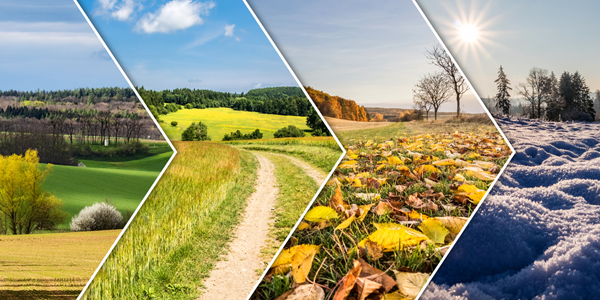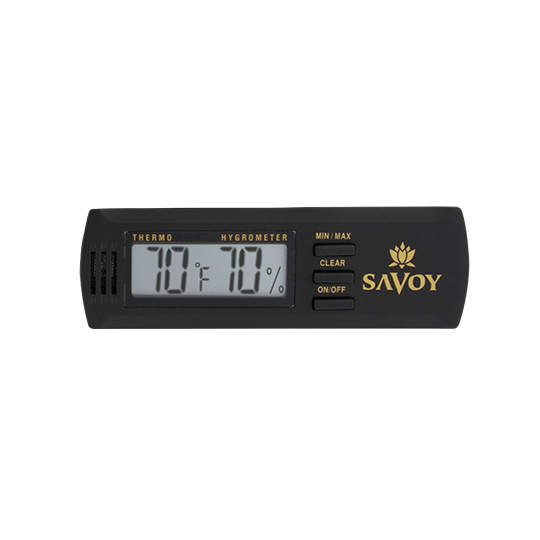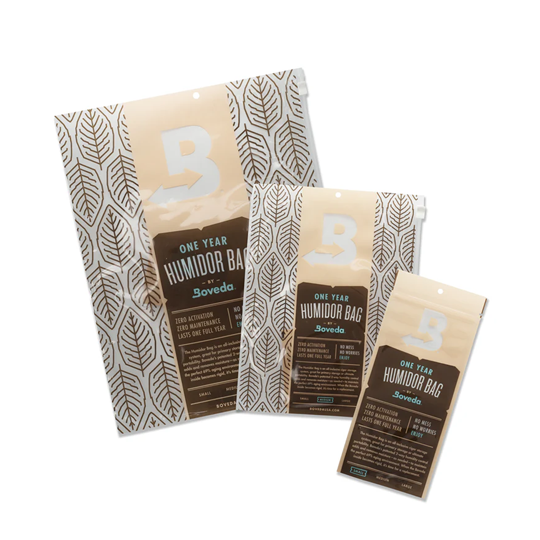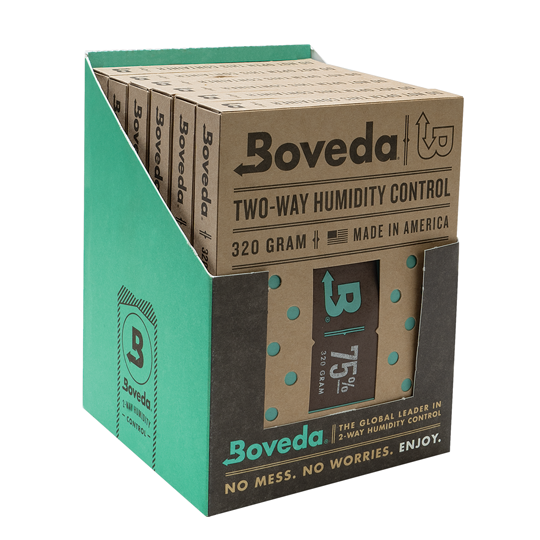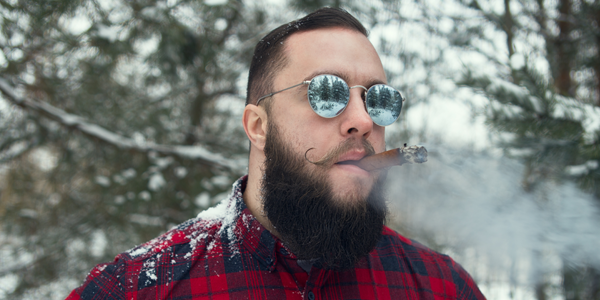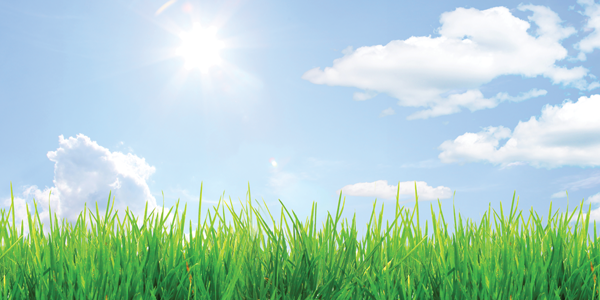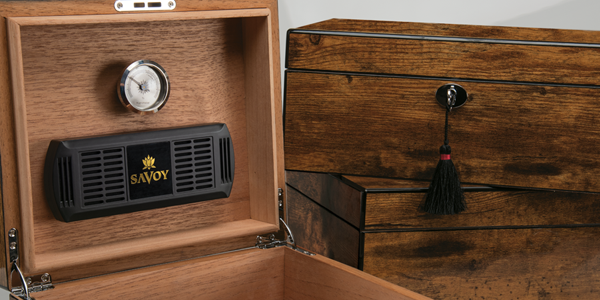Cigars & Weather: Does the Weather Affect Your Cigars?
Weather affects cigars in a huge variety of ways. The amount of cigars consumers purchase varies due to seasonality in some regions. Climate can impact the way we store cigars throughout the year. And, tobacco-growing regions around the world are entirely dependent upon cooperative weather. Let’s take a look at how weather-related factors influence the world of premium cigars and how cigars can go bad.
Weather and Cigar Storage
Cigar lovers regularly ask us how they should store their cigars. Whether you choose to keep your cigars in a traditional humidor, a cavernous coolerdor, or a Boveda Humidor Bag, the weather outside can influence the temperature and humidity levels in your preferred method of storage, especially in climates that experience the seasons.
Ideal conditions for storing your cigars are 70% RH (relative humidity) and 70 degrees Fahrenheit. An acceptable range of roughly 62-72% RH and 62-70 degrees exists, but consistent conditions benefit handmade cigars most. Avoid exposing your cigars to drastic spikes or nose-dives in temperature and humidity.
It’s not a bad idea to gradually increase your humidity level just a touch as autumn heads into winter. Anything over 72% is not recommended, FYI. Make sure your hygrometer is calibrated and keep an eye on your humidity source. You will likely have to replenish it more frequently during the colder months.
And, don’t place your humidor near a direct source of heat, even though it looks perfect on the fireplace mantle. Storing your cigars over 70 degrees can lead to an outbreak of beetles. Too much heat leads to dried-out cigars with cracked wrappers. Also, if the temperature dips down to 62-65 degrees, there’s no need to panic. Maintaining a consistently cooler temperature is better than subjecting your cigars to wild fluctuations when the furnace kicks on. Choose a room or an area of your home that provides stability. And finally, avoid leaving the lid open for long periods when you’re grabbing a cigar.
Review our advice on what to look for in a good humidor and how to season a new humidor when the winter months emerge.
Weather and Cigar Smoking
Because prohibitive smoking bans are the norm and not the exception these days, many of us are relegated to the great outdoors if we want a place to smoke after our local smokeshop closes its doors for the day. Smoking outside is fine – when the weather cooperates, and it’s not winter. We’ve developed a pretty sound regimen of cigars to smoke when it’s cold and a few tricks for combatting bad conditions outdoors.
One key to smoking outside is being aware that different cigars fare better than others when you’re exposed to a breeze or a blast of cold air. Look for cigars blended with a heartier wrapper, such as a Connecticut Broadleaf, a Sun Grown leaf from Ecuador, or an Oscuro from Nicaragua or Mexico’s famed San Andrés region. All of these wrappers display phenomenal integrity and resilience. Certain Cameroon wrappers exhibit of bit delicacy by contrast, making them more susceptible to cracking and/or unraveling in challenging winter temperatures, for example.
We’ve outlined the top cigars to smoke in the springtime, the best blends for the beach, and a host of budget-friendly brands that belong on your radar when you’re in the market for basic yard ‘gars. Because we’re all in the same boat when it comes to smoking outside, it’s our mission to make sure you come prepared.
Weather and the Tobacco-Growing Regions
Any farmer will tell you the weather can be their best friend and their biggest foe. Because so much of the world’s tobacco production is concentrated between the Tropic of Cancer and the Tropic of Capricorn just above or below the equator, hurricanes are a recurring concern. In a recent Cigar Aficionado article, Editor Dave Savona recounts some of the most destructive storms to impact the premium cigar industry.
In 1998, Hurricane Georges devastated the Dominican Republic, killing roughly 400 and people and leaving behind over $1 billion in damages. Ironically, the legendary Arturo Fuente Anejo cigar was born from the hurricane’s tragic circumstances. Carlito Fuente lost several barns aging tobacco for his precious Fuente Fuente Opus X line. To make up for lost production, Carlito re-blended Opus X with Connecticut Broadleaf wrapper that had been aged in cognac barrels. His innovative solution to the wreckage of Hurricane George inevitably lead to another highly sought-after and rare Fuente cigar with Anejo.
Also in 1998, over 11,000 deaths were reported in Central America when Hurricane Mitch unleashed its wrath, impacting tobacco farms and factories throughout Nicaragua and Honduras.
Fans of Macanudo familiar with the brand’s storied Jamaican heritage may wonder why or when production of the iconic label ceased to include Jamaican tobacco. They can thank Hurricane Gilbert which destroyed a thousand acres of tobacco 1988 along with the Royal Jamaica cigar factory in Kingston.
In 2008 alone, Hurricanes Gustov, Ike, and Paloma released a trio of ruinous weather across Cuba. The island’s prime tobacco-growing region, Pinar del Rio, took the brunt of Gustov at the end of August, losing thousands of tobacco-curing barns. Barely over a week later, Ike soaked the island with treacherous rains. Tons of prized tobacco stores were lost. Not only do hurricanes severely impact immediate cigar production, but they cast shadows deep into the future, as it can take years to fully recover and replace tobacco that has already been aging for several years.
Over a century ago, hurricanes decimated the once-thriving cigar production of Key West, Florida where every year 100 million cigars were rolled in over 100 factories. Storms overwhelmed the area in 1909, 1910, and 1919 destroying its vibrant cigar-manufacturing economy.

